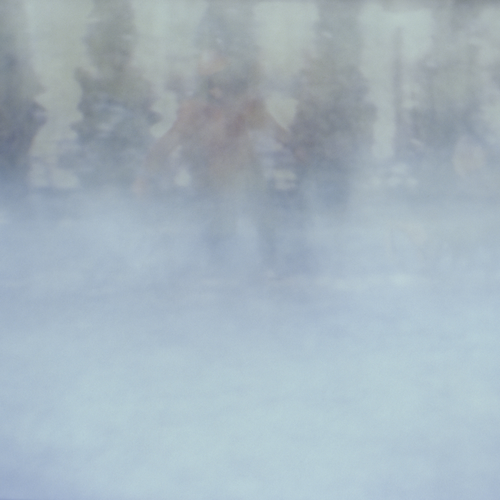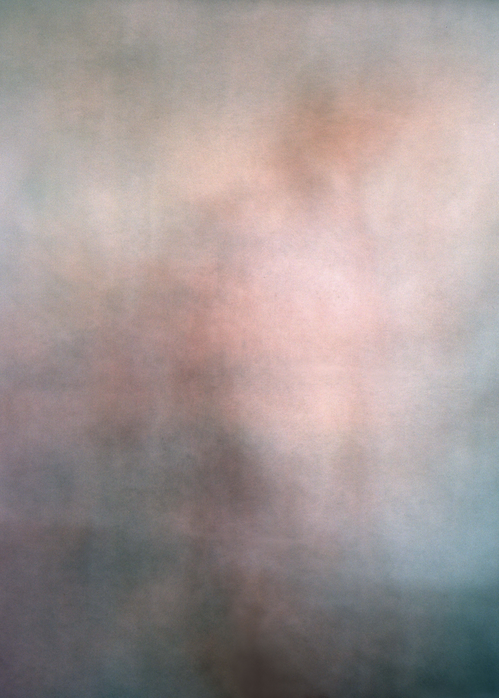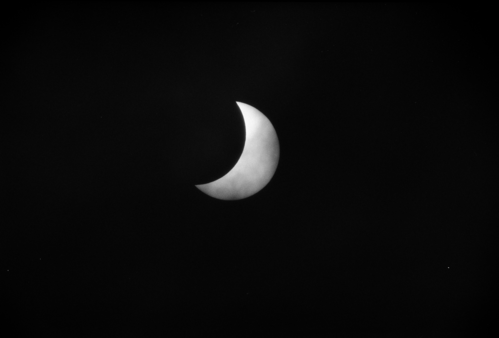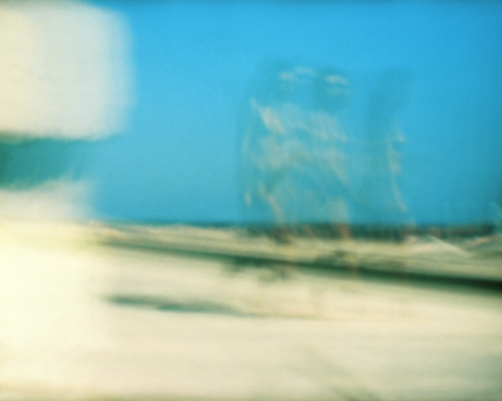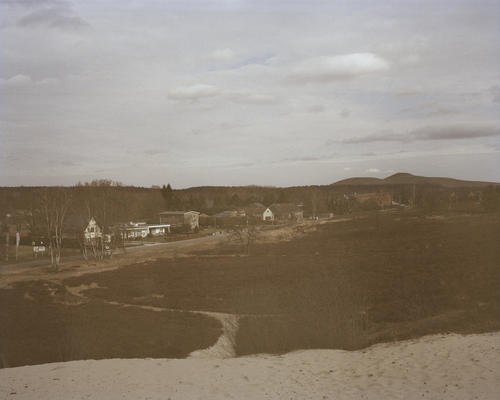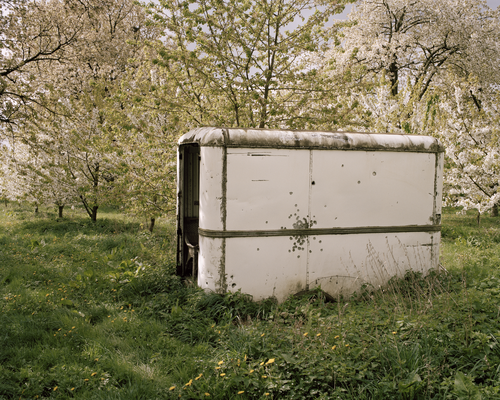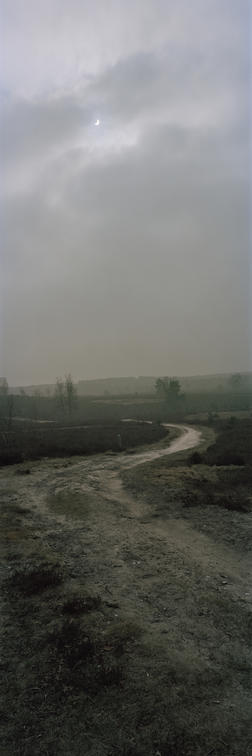Additive Photography
by Ives Maes
Sunville (Introduction)
I grew up in a village named Sunville. Its name brings to mind a utopian place, far too perfect for its reality: a few houses surrounded with forests, swamps and moorland. The coat of arms contains a radiating yellow sun shining brightly over a blue sky. Older versions of the shield contained a black sun with an upside-down smile. Growing up, I started to understand that this melancholic sun symbolised a state of exception. The sun never sees a shadow, a philosopher once said, although it casts many.1 After the recent suicide of my brother, I returned to our childhood homestead. In the forlorn months after his death, I wandered the countryside with a camera and stacks of accidentally expired film, photographing the locations of long-repressed memories. The colour variations in these exposed and expired negatives suggested images much older than they were, reminiscent of photographs taken in the 1970s. My photographs were brought together with snapshots from the family album and footage found in the village’s historical archive. The blue-hued Super 8 films my father had taken with his Kodak Instamatic became, upon watching, tangible memories. Over the course of six seasons, these sequences of look-back time2 symbolically concluded with a partial solar eclipse over the village. [fig. 2] [fig. 3] [fig. 4] [fig. 5] [fig. 6] [fig. 7] [fig. 8] [fig. 9] [fig. 10]
All photographs in this new series were taken between November 2013 and March 2015 but remained unprinted for a while. These images were so disturbing to me that I once believed they would never see the light of day. Exhibiting this new archive to an audience was intimidating, but instead of hiding the vulnerabilities embedded in the series, I used display strategies to mediate them. A number of experiments first led me to create sculptures out of these photographs, which eventually led me to photographic installations. These transmutations of the print were supported by my ongoing research into the materiality of photography.
This became the subject of my Ph.D. in the arts at KASK, School of Arts of University College Ghent. During the course of this Ph.D. in the arts, I have been researching the physical, sculptural, and architectural aspects of photography. Since the invention of photography, there have been numerous hybrid experiments between photography, sculpture, and architecture that demonstrate a continuous influence of sculpture and architecture on photography and vice versa. In my Ph.D. I gave a historical overview, beginning with the sixteenth-century camera obscura pavilion and ending with twenty-first-century digital processes. I also described a number of experiments, including Daguerre’s diorama, Charlotte Perriand’s 1937 Agriculture Pavilion, Richard Hamilton’s photo-installations, the 1970s MoMA exhibition ‘Photography into Sculpture’, Dennis Adams’s bus shelters, and Olafur Eliasson’s camera obscura installations. I analysed and applied these ideas to my artistic practice with the words of Robert Heinecken in mind: ‘To accept only the most obvious or utilitarian function of an image-making device is to deny the real potential of artistic involvement at its deepest level.’3
From 2014 onwards, I started exploring my photographs as spatial objects and installations, as prints and 3D-prints. In this exposition, I would specifically like to show how the photosculpture process of François Willème initially inspired me to create new visual work. He aimed, in the late 1850s, to reproduce sculpture with the help of photography, creating a union of the two media. After a historical description of his work, I will show my attempt to reconstruct his experiments. After further reflecting on other proto-photographic installations, such as the panorama pavilion and the Cinéorama, I will demonstrate how these ideas and techniques were then adapted within my own work. At the same time, this is an exemplary case study on how my theoretical research is steering the creation of my visual research within a Ph.D. in the arts.
1 ‘Il sole non vide mai nessuna ombra’, Leonardo da Vinci wrote in his Codex Atlanticus (1479 – 1519).
2 ‘Look-back time’: a term to describe, for example, the temporality of starlight that reaches us long after the star itself has disappeared.
3 Heinecken, Robert, ‘Manipulative Photography’, Robert Heinecken: Object Matter, ed. by Eva Respini (New York: The Museum of Modern Art, 2014) p. 157.

